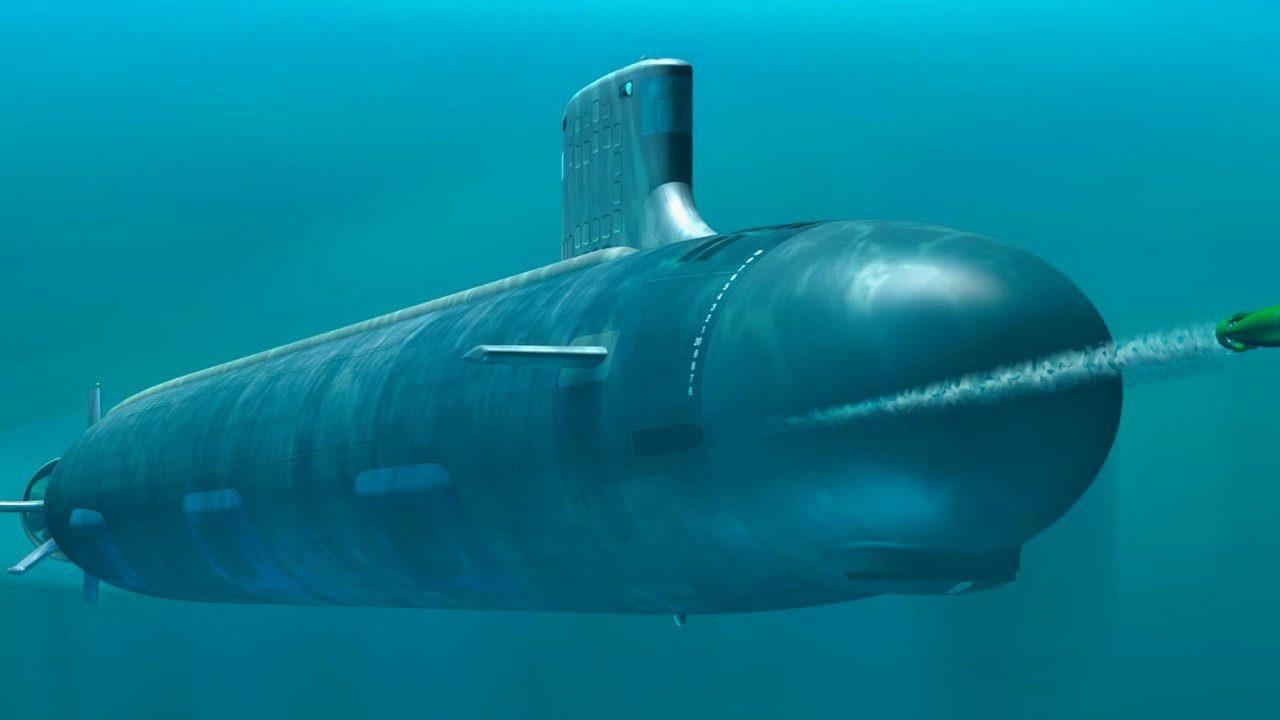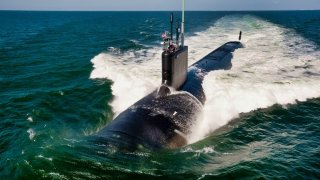Virginia-Class: One of the Best U.S. Navy Submarines Ever
The U.S. Navy's Virginia-class submarines, designed post-Cold War, are heralded as the most capable fast-attack nuclear-powered vessels globally. First introduced nearly 25 years ago as a cost-effective alternative to the Seawolf-class, these submarines excel in stealth, intelligence gathering, and warfare.
Summary and Key Points: The U.S. Navy's Virginia-class submarines, designed post-Cold War, are heralded as the most capable fast-attack nuclear-powered vessels globally. First introduced nearly 25 years ago as a cost-effective alternative to the Seawolf-class, these submarines excel in stealth, intelligence gathering, and warfare.

-Utilizing commercial-off-the-shelf components, Virginia-class subs measure 377 feet and are equipped with advanced 3D visualization technology.
-With 12 vertical missile launch tubes and four torpedo tubes, these submarines can unleash a formidable array of weapons. The newer Block III variants feature enhanced sonar systems and other technological upgrades. Currently, 20-plus Virginia-class submarines are in service, with more on the way.
Virginia-Class Submarines: The Evolution of America's Underwater Arsenal
The U.S. Navy’s Virginia-class submarines are widely considered to be the most capable of their kind across the board.
First designed following the Cold War, these ships can conduct a litany of mission sets, including intelligence gathering operations and anti-submarine warfare in addition to other essential tasks.
Although the original Virginia-class variants entered service nearly twenty-five years ago, these fast-attack nuclear-powered submarines still represent the latest in stealth, intelligence gathering, and weapons systems.
The history of the Virginia-Class:
The Virginia-class ships were designed as a more cost effective alternative to the pricey Seawolf-class submarines.
Costing nearly $2.8 billion per vessel, the Seawolf vessels were declared unsustainable by the Navy, and ultimately, only three ever made it past the construction phase.
To reduce costs, engineers with General Dynamics Electric Boat and Huntington Ingalls Industries utilized commercial-off-the-shelf components to produce the Virginia ships.
Specifically, these manufacturing giants incorporated COTS in their computers and data networks.
The hulls on the Virginia-class boats measure 377 feet in length with a displacement of 7,300 tons, smaller than their Seawolf counterparts.
Specs & Capabilities:
Notably, the Virginia-class submarines were the first U.S. Navy warships to be developed via 3D visualization technology as CATIA, which comprises product lifecycle management, computer-aided design, computer-aided manufacturing and computer-aided engineering.
These formidable ships were designed to seek out and destroy enemy warships, project power via a wide array of weapons, carry out intelligence, surveillance and reconnaissance operations and support battle group operations.
Each Virginia-class submarine is fitted with 12 vertical missile launch tubes and four 533mm torpedo tubes. The vertical launching system is able to fire 16 Tomahawk submarine-launched cruise missiles in one salvo.
It also can launch up to 26 mk48 ADCAP mod 6 heavyweight torpedoes and sub-harpoon anti-ship missiles.
The first boats in the Virginia-class to enter service were the Virginia (SSN 774) and Texas (SSN 775). Subsequent vessels in the series include Hawaii (SSN 776), New Hampshire (SSN 778), Missouri (SSN 780), Mississippi (SSN 782) and John Warner (SSN 785) being built by Electric Boat, with North Carolina (SSN 777), New Mexico (SSN 779), California (SSN 781), Minnesota (SSN 783) and North Dakota (SSN 784). In June 2008, the Navy christened its first ever Block II submarine- USS New Hampshire.

One year later, construction of the Block III boats commenced.
Introducing the Virginia-Class Block III variant:
Each Block III vessel was built with a revised bow with a Large Aperture Bow sonar radar. This variant also sports important sonar enhancements and other technology taken from the Ohio-class SSGNs. Starting with the South Dakota (SSN-790), each submarine was fitted with the Hybrid Multi-Material Rotor developed by Defense Advanced Research Projects Agency (DARPA).

Currently, the Navy has commissioned 20-plus Virginia-class submarines. The majority of the existing vessels are from the Block I-III classes. Only a few Block IV variants have entered service to date, although there are several more under construction and expected to hit the seas in the near future.
About the Author: Maya Carlin
Maya Carlin, National Security Writer with The National Interest, is an analyst with the Center for Security Policy and a former Anna Sobol Levy Fellow at IDC Herzliya in Israel. She has by-lines in many publications, including The National Interest, Jerusalem Post, and Times of Israel. You can follow her on Twitter: @MayaCarlin.


